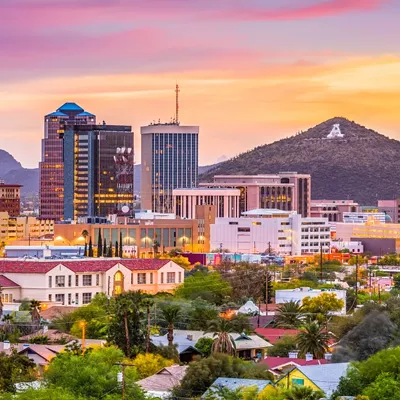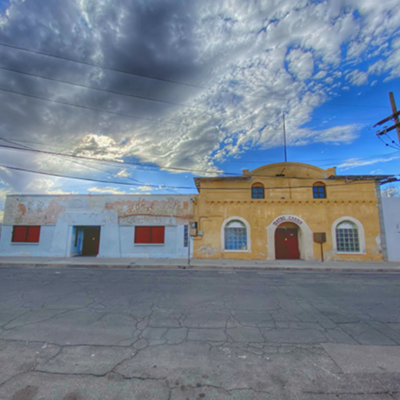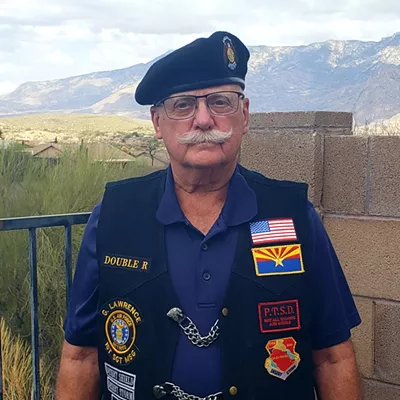Hirt is also board president of Tucson's Sky Island Alliance, and author of A Conspiracy of Optimism: Management of the National Forests Since World War II (Our Sustainable Future). He was a longtime resident of this fair city. And he's a grizzled veteran of the Coronado's last planning go-around in the 1980s, then as representative for Arizona's Sierra Club chapter.
In his book, Hirt argues that the U.S. Forest Service failed its "sustainable yield" credo by allowing lumber companies to run amok for decades. When timber harvests subsequently crashed in the 1990s, that perhaps accelerated a change already occurring within the agency, where a preponderance of road engineers and timber honchos were giving way to ecologically oriented scientists.
Today, that evolution has also perched conservation groups right at the policy table, as the clout of timber, ranching and other resource-hungry industries shrink. And that's a very good thing, given recent changes to the forest-planning process.
Enacted in 2004 with a White House imprimatur, new regulations affect several key elements of forest planning. For example, those plans are no longer required to include specific wildlife protection guidelines. Nor must they include complex and time-consuming environmental impact (or "EIS") statements as mandated by past plans.
According to critics, this new vagueness opens the door for abuse by commercial interests. But Hirt argues that strategies to defang forest protections are just as likely to backfire on their proponents. "We already know what the Bush administration's priorities are," he says. "They don't hide them; they're not being cagey. They would like to increase development (on the forest), and I'm sure they think these regulations will help them achieve those ends.
"So it's not a conspiracy. That's just how politics work." But conservationists "can co-op those regulations to serve conservation and good sustainable land management, too."
This marks the Coronado's first plan revamping since 1986, and it's expected to be finished by 2008. The updated document will then govern the 1.7 million-acre preserve for years to come, outlining how forest officials deal with everything from the surging popularity of noisy off-road vehicles to overall impacts from a booming population.
Hirt says future decisions must be compatible with the new plan's "vision." But beyond that, the document will be mighty short on specific muscle. "You have a planning process that stipulates that decisions are going to be made. But that doesn't mean they actually will be made. There are still ways of dodging them, and politics are always going to be in play.
"So what kind of a real commitment is that?" he asks. "It's not one. The reason they're doing this is because they're trying to dodge doing environmental impact statements for the forest plans."
But according to Hirt, that's not all bad. He recalls endless time spent on environmental impact statements for the 1986 Coronado plan--much of it for projects that never happened. "Now the Forest Service is saying, 'We're not going to do that. These plans are not going to make specific commitments of resources, so therefore, we don't have to do it as an EIS. We're going to streamline the whole process and come up with a kind of a vision document.'"
The reason is clear, he says. "They want to streamline it, because they don't want to create an EIS that can be appealed. And frankly, I'm sympathetic to that desire--to be able to complete the planning process within two years or so. I (prefer) that the Forest Service spend its precious resources doing on-the-ground management rather than spending all its time and money generating paper that sits on a shelf."
Still, he concedes that "the entire environmental community doesn't agree with that perspective. They would like to have good decisions made and have those guide future management. But my historical experience says you can make good decisions, and it doesn't mean they get implemented. And you can make bad decisions, and it doesn't mean they get implemented, either."
So how could this approach actually favor forest conservation? To Hirt, it's a good fit with the way most environmental advances now occur: one small battle at a time. "That's how the environmental movement has done most of its work in the last 15 years," he says. "A lot of the environmental action has been grounded in specific battles over specific pieces of land. It's challenging specific timber sales, challenging specific road construction projects, demanding that the Forest Service improve riparian areas and manage particular areas to protect endangered species."
At the same time, he points to a dramatic shift in Forest Service attitudes. "In the old days, the Forest Service was used to just being in control, and they were very insulated," he says. "They were only required to listen to the public, but didn't have to do what the public wanted them to do. They were used to just being in charge of the resources.
"Now ... they're required to collaborate, to cooperate and work in partnership with the public. But from the point of view of environmentalists, even that was a problem 20 years ago, because they never worked with us. There was a bad relationship between the Forest Service and the environmental community. And they had good relationships with the timber industry and the ranching community."
That changed as the agency moved away from a nearly universal focus on timber markets and cattle grazing. As a result, those industries "have lost a lot of clout, and conservation groups have gained a lot of clout," Hirt says. "There are a lot more opportunities for wildlife groups and environmental groups to engage in getting stuff done that needs to be done."
For example, the Sky Island Alliance has worked closely with the Forest Service to repair damaged riparian areas and identify wildlife migration corridors. "That sort of thing just never happened 20 years ago," he says.
Still, those hard-won relationships will be tested as the new Coronado plan takes shape. Hirt is watching the big picture with fingers crossed. "I am more optimistic now than I was 10 years ago with the first forest-planning process," he says.
"No, I'm not sanguine that the plan they're going to come up with between now and 2008 is going to significantly drive future decision-making. I think that happens at a much more site-specific level. But I am optimistic that the forest will have better vision, with more public participation, than they had 10 years ago. It will be a broader, more inclusive, more conservation-oriented vision. And that's a good sign."









